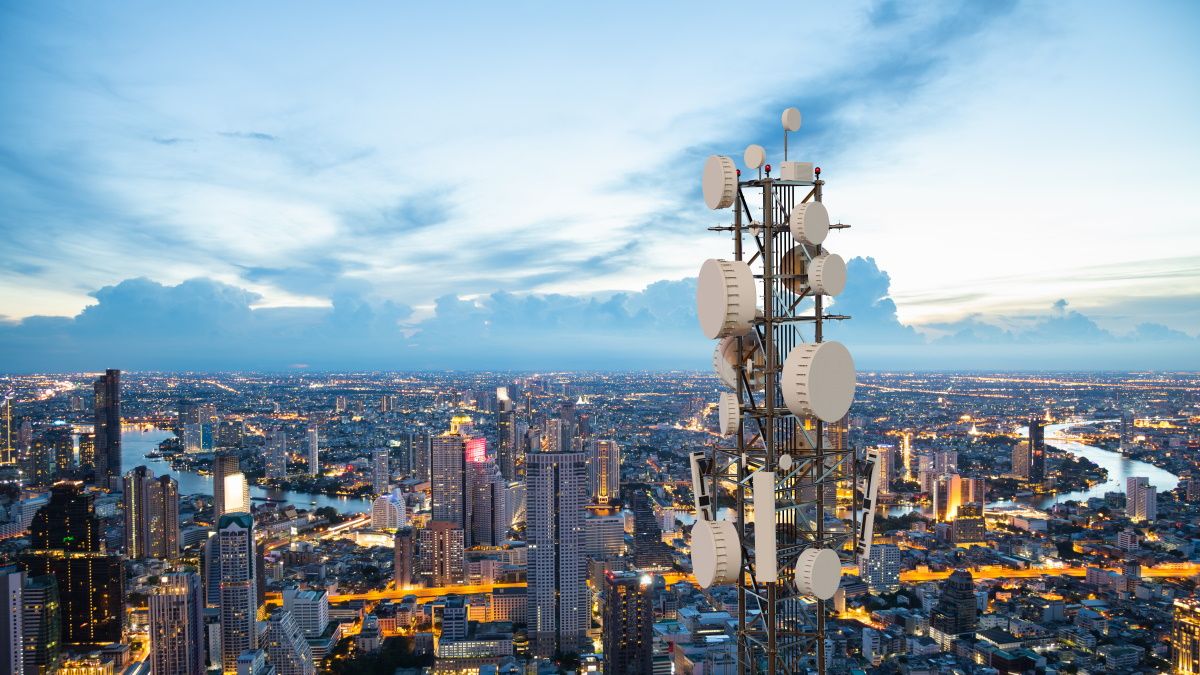Quick Links
5G was going to be amazing. Do you remember the hype? 5G was supposed to be faster than many home internet connections and available basically everywhere. The reality is that 5G often seems to be worse than 4G LTE.
How 5G Was Overhyped (and Why Your 5G Is Slow)
The industry promised speeds of up to 100 Mbps for 5G, and 5G was never going to live up to that hype in typical usage.
Here's why: There are multiple types of 5G, including mmWave, mid-band, low-band 5G. All the hype about crazy 5G speeds and low latency was about mmWave (millimeter wave) 5G. This type of 5G is superfast but has very short ranges. To take advantage of it, you need to be near a mmWave cell tower---and the signal isn't great at traveling through walls.
You might have good mmWave 5G coverage in a dense city. A sports stadium might have enough towers for good mmWave coverage. Maybe everyone in a dense urban center or at a football game now has a solid, speedy signal! That's great.
But what about on the way home? In most places, you won't have that mmWave coverage, so there's no hope of hitting those theoretical mmWave speeds consistently.
It's like if a chain pizza restaurant promised a new delivery service that could deliver you a pizza in as fast as ten seconds. That sounds amazing! But the fine print would be that yes, if you're standing in front of one of their restaurants, they can get you a pizza in ten seconds. Otherwise, you'll have to wait 30-45 minutes for the delivery to arrive. That's a little less impressive, even if it's technically true that they can achieve crazy speeds in an ideal situation.
But Why Does 5G Seem Worse Than 4G LTE?
Beyond mmWave, there's mid-band and low-band 5G. In theory, mid-band 5G should be faster and better than 4G LTE, even if it's nowhere near the promised speeds associated with mmWave.
But it doesn't seem to work that well. We've noticed a lot of cases where our phones switch from 5G to 4G LTE, as if they're struggling and failing to maintain that 5G connection. It's something we've noticed all over the country.
Marques Brownlee has shared the same experience, saying it's "worse than 4G. It's slower, it's less consistent, and it's more expensive."
If you're actually just connected to a low-band 5G network, there's a good chance that it's slower than 4G LTE. Low-band 5G was meant to further extend cellular coverage to remote rural areas that may have been poorly covered by 4G LTE. That's better than nothing, but there's no surprise it's not better than 4G LTE.
Smartphone 5G Icons Are Confusing
On top of all of that, 5G doesn't really mean 5G when you see it on your phone's status bar. AT&T's 5G isn't real 5G---it's 4G LTE with some improvements. If you see "5G UC," that stands for "5G Ultra Capacity" and is T-Mobile's name for mid-band 5G: Something much closer to 4G LTE than mmWave 5G. If you're using AT&T and you see "5G+", however, that means you have a mmWave signal, so that's good. There's a lot of talk about C-band 5G, but that's another type of mid-band 5G.
All those logos muddy the waters, since you may not even be connected to 5G when your phone says "5G." Even if you are, a lot of the 5G status symbols you see don't indicate you're connected to the speedy 5G that the tech industry hyped. This is true whether you're using Android or iPhone.
And, even if you are connected to that speedy mmWave 5G network, you might see a dropoff in speeds as you move further from the tower or go behind a building. Then your phone might decide to try switching to 4G, which could result in connection hiccups as well as a hit to battery life as your phone is continually switching towers.
Hopefully, 5G Will Improve
So where does that leave us? 4G will be around for years to come---plans to sunset 4G networks aren't expected to start until 2030. Still, new investments are going into 5G instead. We're paying for 5G hardware in our new phones, our cell phone plans now include 5G service, and cellular carriers are putting money into upgrading infrastructure for 5G.
Hopefully, it'll get better. Hopefully, a combination of infrastructure upgrades, chipset improvements, and advancements to 5G itself will result in a signal that's somewhat better than 4G LTE over most of the country. It seems likely that the industry will figure it out---eventually.
Still, this feels pretty bad. 5G was going to be a big upgrade, but it feels like we're struggling to get it competitive with 4G LTE. Those crazy 100 Mbps speeds everywhere with almost no latency just aren't going to happen.
The best case scenario is 5G lives up to what it should have been marketed as originally: An improvement to 4G LTE that can deliver superfast speeds in small areas near specialized towers and extend slow cellular service deeper into rural areas without existing cellular coverage.
It's not what many people were led to expect from 5G, but it would still be an improvement.

